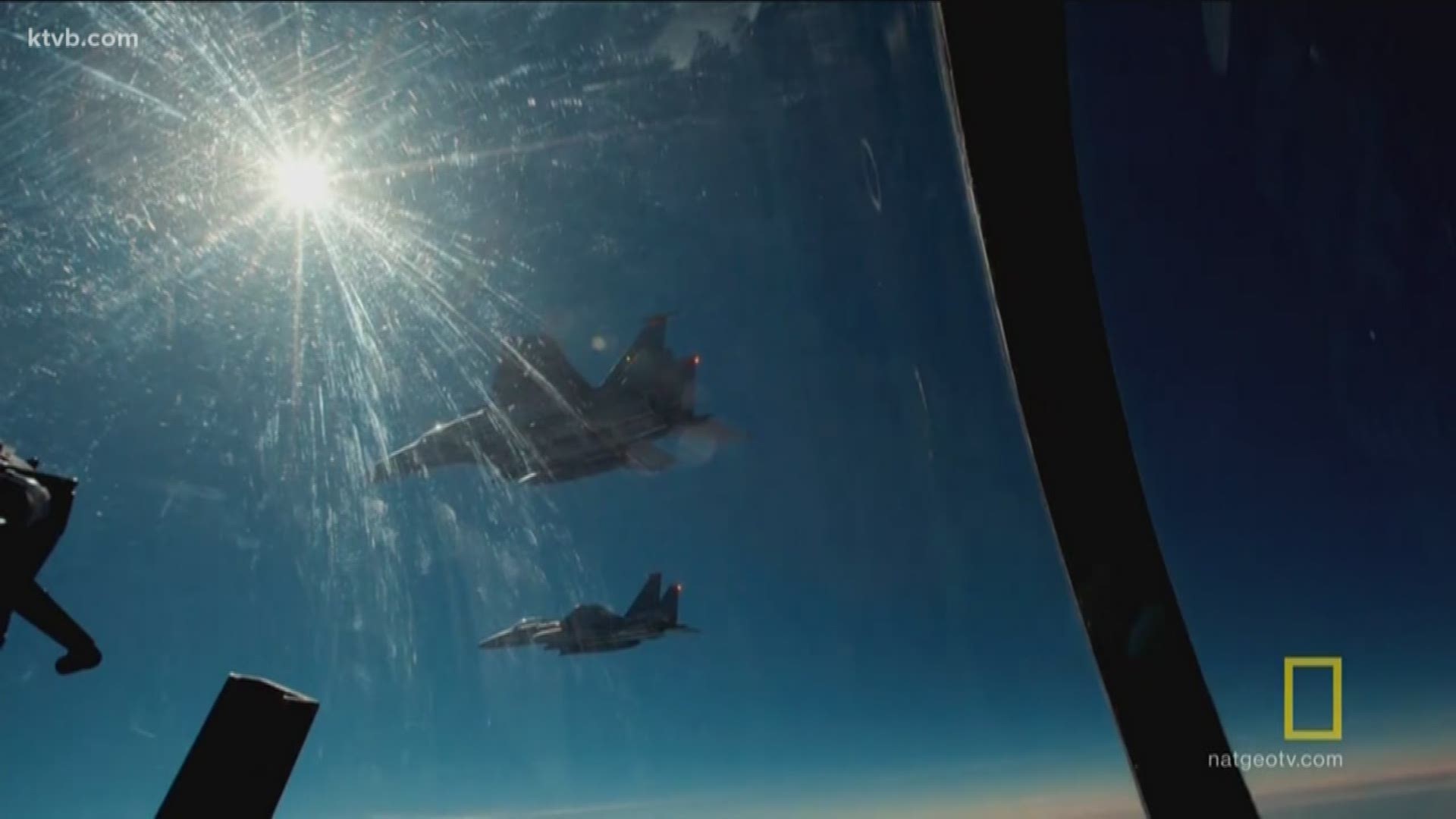BOISE - Thousands of visitors flocked to the Gem State last August to witness the total solar eclipse, but perhaps the best view was from 25,000 feet above the ground.
"It was once in a lifetime, I don't know how else to explain it," says Major Ty Red Bowen of Mountain Home Air Force Base's 389th Fighter Squadron.
Bowen took flight on August 21 with several other Mountain Home Air Force Base pilots, tasked with the mission of flying faster than the earth spins.
"National Geographic was looking at the relationship between our speed, the moon speed and how fast the eclipse was going, and see how long we could actually stay in the shadow of the moon," says Bowen.
The experiment was for an upcoming episode of National Geographic's "One Strange Rock."
"Mountain Home is in a unique situation where we were located relatively close to where the full eclipse would actually be, so they were looking for a fighter squadron that could perform the mission well and see the full eclipse based on the geographic location. They selected our squadron to do it," says Bowen.
For spectators on the ground, the solar event last about two minutes and 45 seconds.
But for Bowen and his fellow pilots, the ordeal lasted nearly four minutes.
"It was definitely a unique experience from the fact that you could see the shadow approaching from behind you unlike a normal cloud, the whole earth was going into a shadow. And then it was just completely dark and you could see the eclipse like everyone else was seeing it, but it turned to night so quickly. And then you could see the shadow leave you and it was not even like a sunrise it was just like the shadow was leaving you, a completely different experience than what we usually experience just going night and day," says Bowen.
Bowen was flying 400 mph, while the moon slid over the sun at a speed of 700 mph.
He says this experiment was the first of its kind but Bowen will never forget.
"This is something we never get asked to do so it was really cool to get to experience it," says Bowen.
This episode of "One Strange Rock" will air on April 30 on the National Geographic channel.

